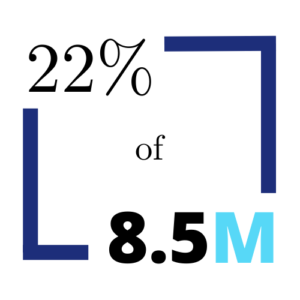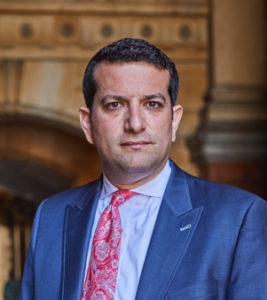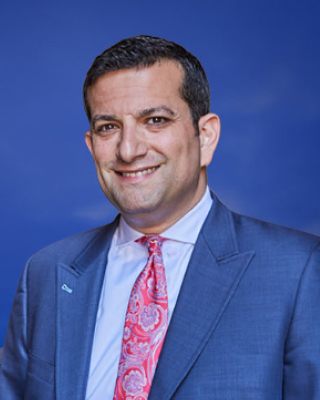While some people use cars to get around, others prefer to operate motorcycles. A motorcycle can seem more convenient on the road. A person might ride one since the vehicle is more fuel-efficient than the average car.
Still, motorcycles have a higher risk of accidents. Some incidents involve the failure to yield the right of way. A driver might not see someone when they turn. A motorist might wonder if motorcycles have the right of way.
Requirements for a Motorcycle License

The United States has over 8.5 million registered motorcycle users. However, an estimated 22 percent of riders in accidents do not have a valid license. Generally, a person needs to obtain a Class M driver’s license to operate a motorcycle. In a couple of areas of the country, a Class L or E is valid as well.
The criteria to get one may be slightly different in each state. The vehicle requires a separate set of skills and education to ride. Several places dictate you have to be at least 16 years of age. Other states set the minimum age requirement at 15. Some people choose to get a permit before they receive a license.
However, the few states offering one may or may not make a permit optional for potential riders. Minors typically have to complete a certified driver education course of at least 30 hours. They need to know how to drive a car before they receive a license for a motorcycle.
Adults and minors have to pass a knowledge exam and a vision exam. A few places might require fingers and paid fees. Once someone earns a permit, they need to keep it for a specific time. A state might have the period last six months.
While someone has an instructional permit, they might be unable to ride with passengers or drive on limited-access roads. The DMV of your state lists what you need to become a licensed motorcyclist.
What Are the Laws for Motorcycles?
Generally, motorcyclists have to follow the same traffic laws an average motorist does. Nevertheless, every state has specific rules for motorcyclists. General laws dictate a ride needs to sit on the seat and face forward. Meanwhile, they must have one leg on each side.
You might see more than one person on a motorcycle. A rider can carry other people if the two-wheeled vehicle has a design fit for more than a single individual. The law may prevent passengers if they interfere with the motorcyclist’s ability to drive safely. The same goes for packages if a parcel stops both hands from reaching the handlebars.
A person cannot operate a motorcycle if they do not wear proper eyewear for protection. A few states make helmets optional for residents over 21. People under the legal age need to use headgear. In general, the law prohibits a headset or pair of headphones.
The laws of your state might prevent motorcyclists from modifying exhaust systems to make them louder. Like passenger cars, a person cannot use a motorcycle if they have drunk an excess of alcohol. In many areas, individuals cannot lane split due to the risks of an accident.
Do Motorcycles Have the Right of Way?
Some vehicles have the right of way based on the situation’s circumstances. For example, another car must yield to a driver making a right turn during a green light. Pedestrians can walk across the street before a vehicle can pass through the intersection.
However, some people wonder if motorcycles have the right of way. A person on a motorcycle does not always have the right of way. They have the privileges under the same conditions traffic laws give passenger cars. Other vehicles should yield to a motorcycle at an intersection with stop signs if the rider appears first.
However, an individual on a two-wheeled vehicle has to yield to a right-turning car if they turn left. The exception is if the rider has a green arrow signal active. They can face penalties if they fail to yield to other cars.
When a motorcycle has the right of way, they still face the risk of an accident. The damage is usually worse due to the vehicle’s size.
Frequent Types of Motorcycle Accidents
Every year, over 5,000 motorcycle fatalities occur in the United States. The injuries a motorcyclist sustains usually are more severe due to the lack of a protective barrier. Even with a helmet and other gear, the person should still see a doctor.
Motorcycles can get involved in a variety of accidents for different reasons.
Frequent scenarios include:
- Intersection accidents. Intersections are common areas where incidents occur. A car might run the red light and collide with a motorcycle, or a driver could fail to yield during a left turn. Distractions and misjudgments could be the reason for an accident.
- Read-end collisions. A car behind a motorcycle could bump the rear of the smaller vehicle. The incident might occur if the rider stopped and the driver did not pay attention in time. Excessive speeds and tailgating have a high potential for a rear-end collision.
- Sideswipes. When two vehicles travel in the same direction, one might hit the side of the car. A car could drift from its lane and collide with a motorcycle. Exhaustion or a distraction might cause the vehicle to deviate. Other times, the driver did not check their blind spot before changing lanes.
- Rollovers. A motorcycle might fall onto its side if it runs into fallen debris. New riders make the mistake of going fast on sharp curves. A person can get into a rollover accident with another vehicle. A car could flip and land on an unsuspecting motorcycle.
- Underride accidents. An underride crash is when a smaller vehicle ends up underneath a tractor-trailer or large truck. Motorcycles can slide underneath a semi-truck from behind, the side, or the front. Poor visibility and inadequate truck maintenance contribute to an accident.
The nature of the crash can result in increasingly expensive medical bills. You might have to miss work or suffer from the loss of a loved one. If negligence caused your damages, a lawyer can get you compensation.
What Is Lane-Splitting?
Riders of motorcycles and other two-wheeled vehicles might engage in a maneuver people call lane splitting. They move in between two lanes of cars to bypass congestion during periods of heavy traffic. Other terms include white-striping and forward filtering.
Lane splitting poses risks since drivers do not expect a motorcycle to pass by them suddenly. A motorist might not see a motorcyclist due to their size or a blind spot. A person could hit a rider on the side when they change lanes.
Lane splitting is riskier when vehicles move quickly. However, an accident can still occur when other cars reduce their speed. Legally, the maneuver is a gray area. Many states ban the practice to lower rates of collisions. Meanwhile, a couple of places permit people to lane-split in slow-moving traffic.
What to Do After a Motorcycle Accident
Contact the Authorities
After a motorcycle accident, you or someone there needs to call the police. Usually, a person has to make an accident report if bodily harm or significant property damage is present. An officer arrives to observe the crash site. They write down the time of day and weather details.
The police may gather statements from the parties involved. When they draft a police report, they may include their thoughts on the cause of the accident. You can collect a copy from your local law enforcement officials. However, you might have to pay a fee.
The police may not show up if bodily harm does not occur. Get the name, number, and insurance information from the other driver. The law may require all parties to exchange information.
Document the Crash Site
If you can, use your phone to take pictures of the scene. Photos should capture the damage to the motorcycle and other vehicles from various distances and angles. The crash site could have debris and skid marks for you to document.
Additionally, you might have visible injuries. Capture the state of them before you begin treatment. You can document your injuries as they heal. If you have a broken helmet or torn clothing, do not throw them away before you have a chance to claim damages.
Go to the Hospital
The next step is to go to the hospital for a complete examination. The doctor can notice if you have a grievous condition because of the motorcycle collision. You can begin treatment right away and know what ongoing medical costs you can claim for compensation.
A visit to a healthcare facility allows you to have a strong case if the adjuster downplays your injuries.
Visit a Mechanic
Even if your motorcycle appears in working condition, you should go to an auto repair shop. The vehicle could have hidden damage and be unsafe to use. Additionally, the mechanic can give you an estimate of the value of accident-related repairs.
If you need to replace your motorcycle, you can use the bills to increase the value of your case.
Hire a Lawyer
Hire a lawyer if the insurance company denies your claim. The other side might dispute fault for the accident. A lawyer consolidates the evidence to settle your case efficiently.
Do Motorcyclists Need Insurance?

Most states require people to have insurance when they register a motorcycle, but some do not. Otherwise, riders operate the vehicle illegally and could receive multiple penalties. Overall, an individual should purchase minimum coverage for property damage and bodily injury liability.
A state might have a different minimum requirement than others. Someone might have to get at least $25,000 for bodily injury and $10,000 for property damage per accident. Other states expect at least $15,000 for property damage coverage. A rider needs to check the rules of their state when they sign up for an insurance policy.
Plenty of auto insurance companies offer options for motorcycles. Each plan has different features to suit individual policyholders. You can benefit from having an insurance plan in case of an accident. You may need to get compensation from your insurer based on where you live.
Of course, the other motorcycle or car might not have insurance. You would need to pursue other options to obtain compensation.
Tips for Dealing With Insurance Adjusters
Motorcycle insurance adjusters can pose issues after accidents. They can derail your claim while you contend with multiple medical bills and lost wages. The adjuster is not on your side, especially if they work for the other motorist's insurer.
While cooperation is helpful, you do not have to provide every piece of information a representative asks. Most motorcycle accident lawyers suggest people minimize communication with the other side’s insurance company.
If you need to talk to an adjuster, tips to help you prepare are:
- Give short answers. An insurance adjuster asks questions about the accident and nature of your injuries. Keep your responses concise and definitive. The person on the phone might make you feel comfortable, hoping you share additional information. They could use your words to limit your claim.
- Anticipate the possible questions. Preparing your answers in advance can improve a favorable outcome. You can craft your response based on common questions an adjuster might ask you. You might have to talk about how the accident occurred. A web search could yield potential inquiries as well.
- Do not admit fault. If you speak to an insurer, avoid statements an adjuster might interpret as a sign you are at fault. The company could have a reason to deny or limit your claim. The fight for compensation becomes more difficult as a result.
- Pause before signing any papers. The insurance company might ask you to sign a medical authorization form. Alternatively, an adjuster could present you with settlement papers. An authorization form could be a tool to blame your injuries on a pre-existing condition. Settlement papers usually mean you get low compensation.
Insurance agents know how to minimize claims. You have the right to stop a conversation and hire a lawyer for assistance.
